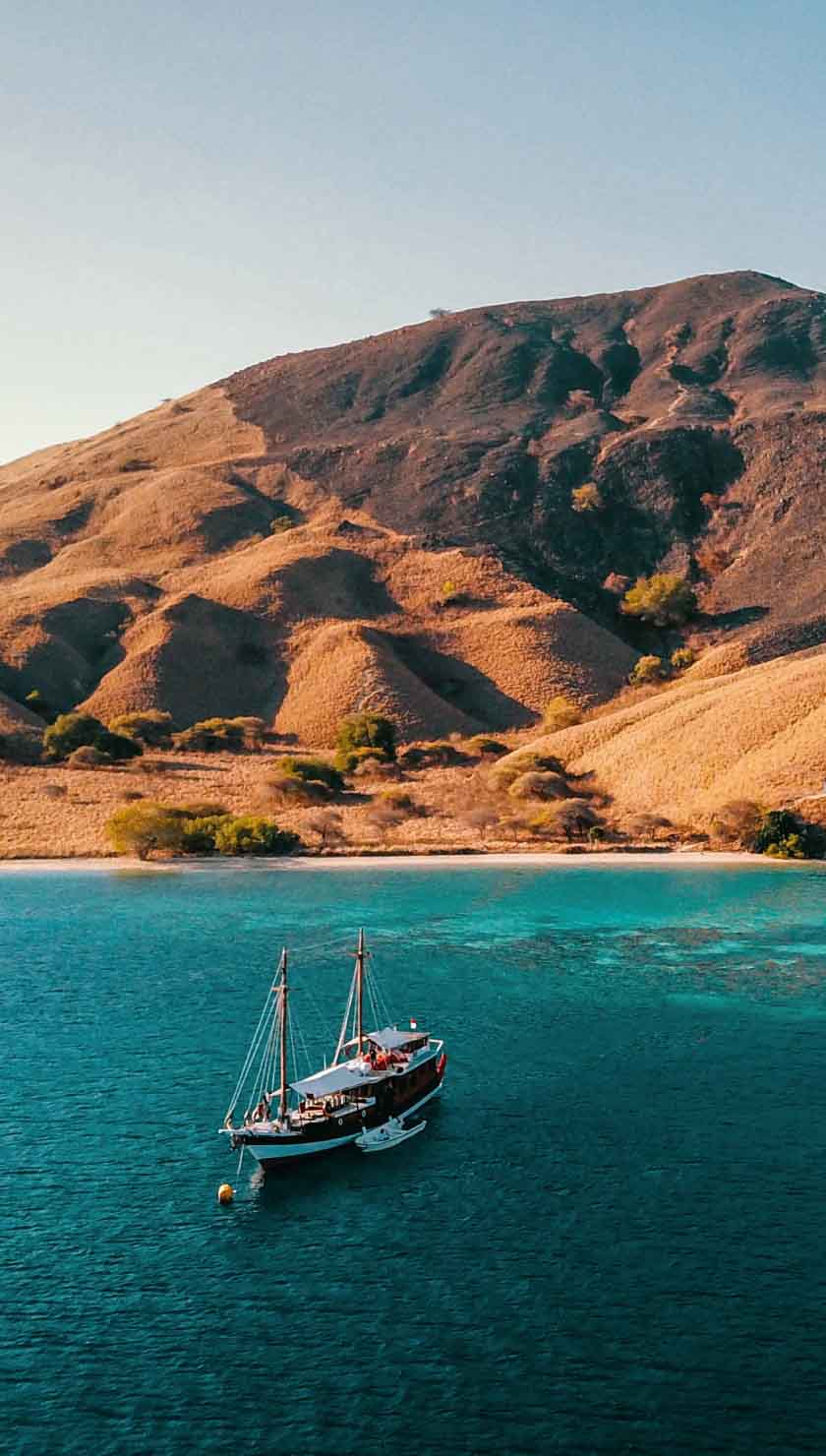Best Time to Cruise Alaska: Adventure Guide
Shifting seasons, glaciers, and wildlife shape every moment.
Alaska is a land defined by motion—glaciers creak and calve into midnight-blue fjords, mist drifts through old-growth forests, and whales rise from steel-gray seas with the slow, powerful rhythm of the tides. From the winding channels of the Inside Passage to the towering ice walls of Glacier Bay National Park, the landscape feels profoundly alive. On a small ship, you travel close to the waterline, slipping quietly into places like Tracy Arm, Sitka’s island-dotted soundscape, and the sheltered bays near Ketchikan, where temperate rainforest leans over tide-swept shores.
For many travelers, the journey begins long before the first iceberg appears on the horizon—at departure ports such as Seattle or Juneau, where city skylines and mountain backdrops mark the threshold between everyday life and the wild. But in Alaska, timing matters more than almost anywhere else. The question of the “best time to cruise Alaska” is not just about warmth or daylight; it’s about understanding the choreography of the natural world: when humpbacks return to the Inside Passage, when bears gather along salmon-rich streams outside Sitka and Ketchikan, and when fjords like Tracy Arm open as winter ice retreats.
As 2025 approaches, Alaska’s Inside Passage, its glacier-carved bays, and its remote archipelagos invite small-ship travelers into a world ruled by tide and season. Whether you’re drawn to the hushed solitude of April’s snow-framed peaks, the endless light of June, the thriving wildlife of July and August, or September’s fire-colored hillsides and long sunsets, each month reshapes the experience. This guide takes you through the Alaska small ship cruise season month by month, helping you find the best Alaska cruise 2025 for your style of adventure.
Understanding Alaska’s Cruise Seasons
Alaska’s cruise season runs from late April through October, a compact period during which daylight, weather, wildlife, and ice conditions change dramatically. Early in the year, snow still rims the mountains, and ice can linger at the heads of fjords like Tracy Arm and Endicott Arm. By mid-season, waterfalls roar down granite walls, forests along the Inside Passage glow a rich jade, and whale blows punctuate the calm surface of the channels. As autumn approaches, the tundra reddens, the air turns crisp, and migratory species prepare to move on.
These rhythms shape every itinerary. In spring, some routes focus on the more sheltered reaches of the Inside Passage, avoiding fjords that remain choked with ice. By June and July, Glacier Bay National Park is at its most accessible, with deep bays open to small-ship exploration and abundant wildlife feeding in nutrient-rich waters. Light is equally essential: June and July bring long days ideal for photography and extended shore excursions, while September and early October offer dramatic sunrises, sunsets, and the first chance—on clear nights—to glimpse the aurora dancing over coastal mountains.
Small ships excel in this fluid, seasonal environment. Their shallow draft allows captains to nose into quiet coves outside Sitka or Ketchikan, adjust the day’s plan to follow a pod of feeding humpbacks, or linger in front of a glacier face when the ice begins to crack and thunder. While larger vessels are tied to fixed routes and port calls, small ships can respond to conditions in real-time, making the best use of each window of calm weather, open ice, or an unexpected wildlife encounter. The result is an Alaska cruise shaped not just by a schedule, but by the living landscape itself.
Month-by-Month: The Best Time to Cruise Alaska
April: Early Season Quiet & Awakening Landscapes
April marks the quiet reawakening of Alaska’s coastal wilderness. Snow still crowns the peaks above the Inside Passage, and the air holds a lingering chill, with temperatures often between 2–7°C (35–45°F). Fjords like Tracy Arm may still harbor large pans of winter ice, creating a stark, sculpted seascape of cobalt water and white floes. Wildlife stirs into motion—mountain goats appear on steep slopes, seabirds return to nesting cliffs, and the first gray whales migrate past outer passages.
Sea conditions are often calm in the sheltered channels, and small ships take advantage of this early-season serenity, favoring protected routes and quiet anchorages near forested coves. This is an ideal time for travelers who value solitude and moody, snow-framed landscapes over warmth and who want to experience Alaska before the main rush of summer. Alaska small-ship cruises
May: Spring Sunshine, Wildlife Activity & Lower Crowds
May brings longer days and some of the clearest weather of the Alaska small ship cruise season. Temperatures typically rise to 7–13°C (45–55°F), snow recedes from lower slopes, and waterfalls tumble down the granite walls lining fjords like Tracy Arm and Endicott Arm. Along the Inside Passage, coastal towns such as Ketchikan begin to stir with early-season salmon activity and flightseeing opportunities, while Sitka’s volcano-studded skyline emerges from winter’s haze.
Humpback whales arrive in growing numbers, joined by porpoises, sea lions, and eagles patrolling the shoreline. Small ships enjoy relatively light traffic at this time, allowing unhurried glacier viewing and flexible wildlife watching. May is an excellent choice for those seeking clear visibility, vibrant spring energy, and fewer ships on the water.
June: Peak Light & Thriving Wilderness
June ushers in a season of long, luminous days—up to 18 hours of usable light in parts of Southeast Alaska. Temperatures range from about 10–16°C (50–60°F), offering comfortable conditions for extended time on deck. The Inside Passage is fully awake: forests are emerald green, wildflowers bloom in alpine meadows, and marine life thrives in rich feeding grounds. Glacier Bay National Park is at its most accessible, with deep inlets open for exploration and an abundance of wildlife, from sea otters to humpback whales.
Many itineraries depart from Juneau or Seattle, tracing routes past Tracy Arm, Ketchikan, and Sitka as they weave through island chains and glacier bays. Sea conditions are generally stable, making June an ideal month for travelers who prioritize daylight, varied wildlife encounters, and a broad range of itinerary options.
July: Warm Days, Wildlife Encounters & Prime Conditions
July is peak season for many Alaska travelers, and for good reason. Temperatures often sit between 13–18°C (55–65°F), with some warm, sunlit afternoons along the Inside Passage. This is prime time for whale activity—humpbacks can be seen bubble-net feeding, while orcas patrol narrow channels and open bays. Salmon runs intensify, drawing brown and black bears to streams near communities like Sitka and Ketchikan, as well as to wilder river valleys deep in the fjords.
Glacier viewing is spectacular, with calving events common in Glacier Bay National Park and in tidewater glaciers accessible by small ship. While this is one of the busier months on the water, small ships can still escape into quieter coves and anchorages, creating a balance between prime wildlife viewing and a sense of remoteness.
August: Wildflower Meadows & Late-Summer Calm
In August, Alaska settles into a rich late-summer rhythm. Temperatures remain in the 10–16°C (50–60°F) range, and while occasional rain drifts through the Inside Passage, the payoff is lush, mossy forests and mist-swathed mountains that feel almost otherworldly. Wildflowers linger in coastal meadows, and berry bushes attract bears along shorelines and valley trails. Whales are still feeding actively, and eagles crowd perches above salmon-laden rivers.
Itineraries often pair larger hubs, such as Juneau or Ketchikan, with more remote anchorages and glacier visits, blending cultural stops with quiet nights in the wilderness. As families begin to return home toward the end of the month, ship traffic can ease slightly, making August a compelling choice for travelers seeking both vibrancy and a touch more space.
September: Autumn Colors & Northern Light Potential
September transforms Alaska into a study in color and contrast. Temperatures cool to around 7–13°C (45–55°F), and hillsides burn with reds, golds, and russet tones as tundra and forest shift into autumn. In Glacier Bay National Park and along the broader Inside Passage, the character of light changes—sunrises and sunsets stretch longer, and clear nights can bring the first glimpses of the aurora shimmering above mountain silhouettes.
Wildlife remains active: bears continue to feed along salmon streams, moose gather in open valleys, and whales linger in feeding grounds before migrating south. Small ships benefit from quieter ports in Sitka, Juneau, and Ketchikan, where the atmosphere becomes more contemplative, making it ideal for photographers and travelers who prefer cooler temperatures, dramatic skies, and fewer vessels at anchor.
October: End-of-Season Solitude & Rugged Beauty
October marks the closing chapter of the Alaska cruise season, and it does so with a rugged, atmospheric beauty. Temperatures typically range between 2–7°C (35–45°F), and fresh snow may dust the high peaks above the Inside Passage, creating a stark contrast against the fjords. Some wildlife has already migrated, but whales may still be present in reduced numbers, and resident species—such as sea otters, sea lions, and bald eagles—remain part of the everyday seascape.
The weather can be more changeable, with stronger winds and shifting cloud systems. Still, small ships that venture into this late season are rewarded with deep solitude: quiet anchorages, near-empty bays, and glacier faces observed in hushed conditions. October is best suited to travelers who embrace unpredictability, value stillness over comfort, and want to witness Alaska’s coastline in a state of transition back toward winter.
Highlights of Cruising Alaska by Small Ship
Glacier Bay: Ice, Silence & Sacred Landscapes
Glacier Bay National Park feels like a cathedral carved from ice. Towering blue walls rise above glassy water brimming with bergy bits and drifting floes, while distant ridgelines hold remnants of ancient icefields. The soundscape is almost otherworldly—waves lapping against the hull, the calls of seabirds, and, occasionally, the deep crack and thunder of a glacier calving into the sea.
Small ships can linger here, adjusting their timing to tides and light, and often combine Glacier Bay with visits to nearby communities like Sitka or Ketchikan, where cultural history adds depth to the region’s glacial story.
Tracy Arm & Endicott Arm Fjords
Carved deep into the Coast Mountains, Tracy Arm and Endicott Arm are among the most dramatic fjords in Southeast Alaska. Their narrow corridors are lined with vertical granite cliffs striped with waterfalls and dotted with patches of ancient forest clinging improbably to rock. Icebergs—bright blue, sculpted, and translucent—drift in the water, hinting at the towering ice faces at the fjords’ heads.
Departing from Juneau, many small-ship itineraries navigate these arms slowly, weaving among the ice and approaching tidewater glaciers at a respectful distance. It’s an environment tailor-made for smaller vessels that can pivot, pause, and adapt to shifting ice and weather conditions.
Wildlife Encounters: Whales, Bears, Eagles & More
Alaska’s coastal waters and forests form one interconnected ecosystem, and small ships place travelers right in the center of it. In the Inside Passage, humpback whales rise to feed, sometimes bubble-netting cooperatively, while orcas trace family routes along channels and open straits. Brown and black bears forage along riverbanks near Sitka and Ketchikan, eagles watch from high snags, and Steller sea lions crowd rocky haul-outs. Because small ships can detour or pause when wildlife is spotted, encounters feel organic and unhurried, unfolding on nature’s timeline rather than the clock.
Tlingit Culture & Coastal Communities
Along Alaska’s coasts, the story of the land is inseparable from the story of its people. In communities such as Sitka, Ketchikan, and Juneau, Tlingit heritage is visible in carved totem poles, clan houses, and contemporary art that reflects centuries of relationship with sea, forest, and ice. Small-ship itineraries often include time in these ports, inviting travelers to meet local artists, hear oral histories, and visit cultural centers. These encounters provide a vital context for the surrounding landscapes, transforming fjords and islands from scenery into storied homelands.
Kayaking, Zodiac Landings & Wilderness Access
Small ships turn Alaska’s coastline into a living playground for low-impact exploration. Kayaks slip silently along kelp forests, where harbor seals peek up between fronds and sea stars cling to submerged rocks. Zodiacs ferry guests ashore to remote beaches, mossy trails, or rocky viewpoints where no pier or cruise terminal exists. From paddling beneath waterfalls in narrow coves to beachcombing on wave-polished shorelines, these experiences offer a level of immersion that larger ships can’t match.
Remote Coves & Nighttime Anchorages
Evenings aboard a small ship carry their own quiet magic. Rather than docking in large commercial ports, many itineraries anchor in secluded coves along the Inside Passage or near islands off Sitka and Ketchikan. At night, you may hear nothing but the gentle slap of waves on the hull and the distant calls of birds or sea lions. On clear nights in late summer and early autumn, the sky can reveal a scatter of stars—or even a faint, wavering curtain of northern light. It’s a reminder that in Alaska, even the hours between adventures are part of the experience.
Choosing the Best Alaska Cruise
Choosing the best time to cruise Alaska in 2025 depends on what you value most. If long days, comfortable temperatures, and lush greenery appeal to you, June and July are ideal, especially for itineraries linking key ports like Seattle, Juneau, Sitka, and Ketchikan with glacier-rich regions such as Glacier Bay National Park. Wildlife enthusiasts often favor May through August, when whales, bears, and seabirds are most active and salmon runs animate streams and shorelines. Photographers and travelers who enjoy cooler air and dramatic light may gravitate toward September, when autumn colors and quieter fjords reward patient observation.
It’s also important to consider your preferred level of activity. Kayakers and hikers may prefer the relative stability and warmth of midsummer, when trails are more accessible and shore excursions can fill long days. Glacier-focused travelers will find spectacular views throughout the season, though mid-season often offers the best combination of access and comfortable weather. Finally, consider crowds and pricing: early-season journeys from Seattle or Juneau in April and May, as well as late-season voyages in September and October, can offer more solitude and often more attractive fares, without sacrificing the essence of the Alaska experience.
Something for Everyone
Wildlife lovers will find Alaska’s fjords and channels to be a living theater. From bubble-net feeding humpbacks along the Inside Passage to brown bears patrolling salmon streams near Sitka and Ketchikan, each day presents a new chapter in the story of migration, feeding, and survival. A small ship’s slow pace and flexible routing let you linger in these moments rather than rush past them.
Adventure travelers and photographers thrive in Alaska’s constantly changing light and weather. Long midsummer days allow extended exploration by kayak or on foot, while autumn brings moody skies, misty forests, and low-angle light that makes every iceberg and ridgeline more dramatic. The chance to trace a route from Seattle up to Juneau or beyond, watching the landscape evolve with each passing day, adds narrative depth to the journey.
For couples, families, or small groups, Alaska’s small-ship voyages offer both intimacy and grandeur. Shared sightings—a sudden whale breach, a glacier calving in Glacier Bay National Park, or the first glimpse of a bald eagle perched above a Ketchikan inlet—become anchor points for connection. The ship itself feels like a floating lodge, where you return each evening to warm meals, conversation, and views that change with every tide.
Life Onboard a Small Ship in Alaska
Life onboard a small ship in Alaska balances cozy comfort with constant possibility. Warm lounges and panoramic windows invite you to watch passing islands, mist-shrouded forests, and distant glaciers even when the wind picks up outside. Open decks are never far away; guests slip out with binoculars and cameras whenever a naturalist calls out a whale sighting or an eagle overhead. Daily briefings shape each day’s rhythm, weaving together weather forecasts, wildlife reports, and cultural insights from communities like Juneau, Sitka, and Ketchikan.
Meals are often inspired by local ingredients, including fresh salmon, Dungeness crab, seasonal greens, and wild berries when available. Conversations around the table drift from the day’s hikes and Zodiac landings to the stories shared by guides about Tlingit heritage, glacial history, or whale behavior. The itinerary itself remains flexible: a calm morning might mean extra time in Tracy Arm, while an afternoon whale feeding event could prompt an unplanned pause in a sheltered bay. Over time, the ship feels less like a vessel and more like a moving observatory, tuned to the rhythms of tide, weather, and light.
What to Pack for an Alaska Cruise
Packing for Alaska means preparing for a variety of conditions and layering for comfort. Start with moisture-wicking base layers, add insulating mid-layers like fleece or lightweight down, and top with a waterproof, windproof shell. Warm hats, gloves, and scarves are essential, even in midsummer, especially for glacier viewing or long evenings on deck. Waterproof pants and sturdy, non-slip footwear will keep you comfortable during Zodiac landings, forest walks, or shoreline explorations. Don’t forget binoculars for wildlife spotting, a camera with weather protection, and dry bags to safeguard gear on wet days.
A sustainability-minded approach enhances the experience without increasing your footprint. Opt for reusable water bottles and coffee mugs, avoid single-use plastics where possible, and choose clothing made from durable, low-impact materials that will last beyond a single trip. Respect wildlife viewing distances, follow your guides’ instructions ashore, and leave beaches and trails exactly as you found them. In a place as resilient yet vulnerable as Alaska, small choices can help keep the landscapes and communities you visit thriving for future travelers.
Whether you dream of watching ice crash into teal waters in Glacier Bay National Park, kayaking beneath waterfalls in Tracy Arm, or gliding along the Inside Passage past Sitka, Ketchikan, and Juneau under late-summer skies, Alaska offers a different kind of magic in every month. Explore our curated collection of small-ship itineraries and find the perfect 2025 voyage into America’s wildest maritime frontier—where the light, the tides, and the seasons themselves help shape your journey.










